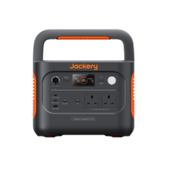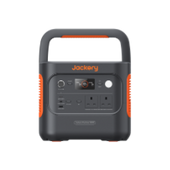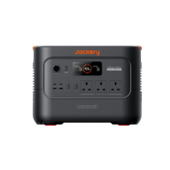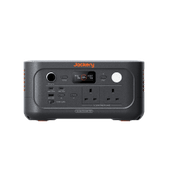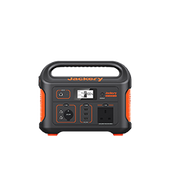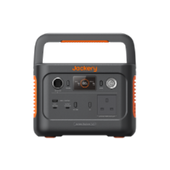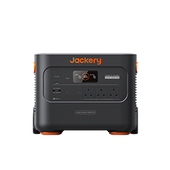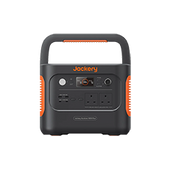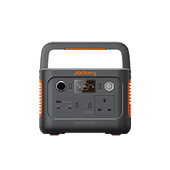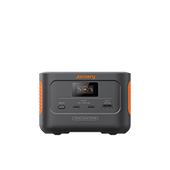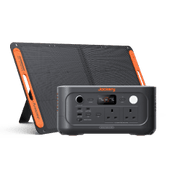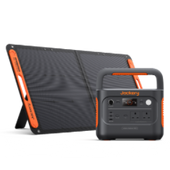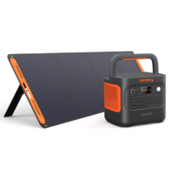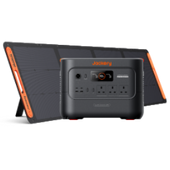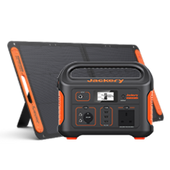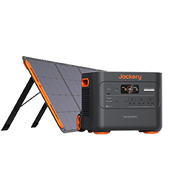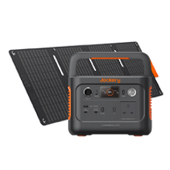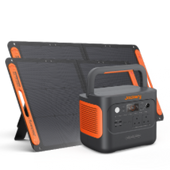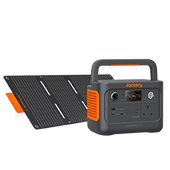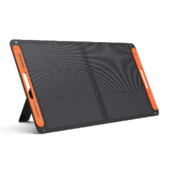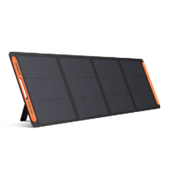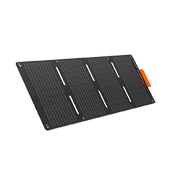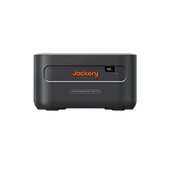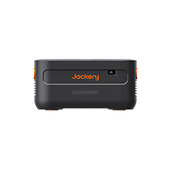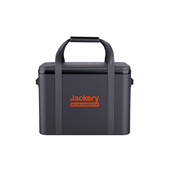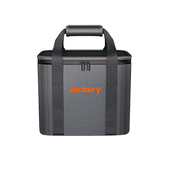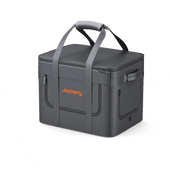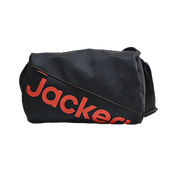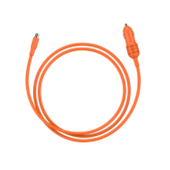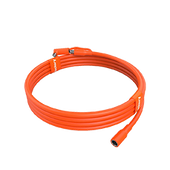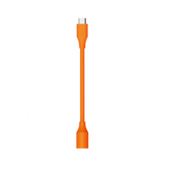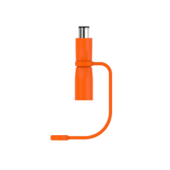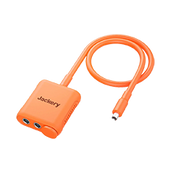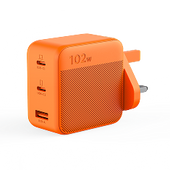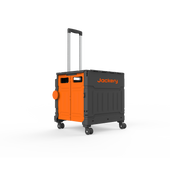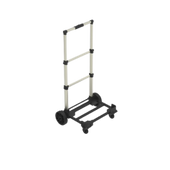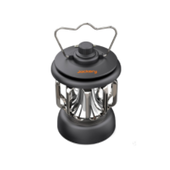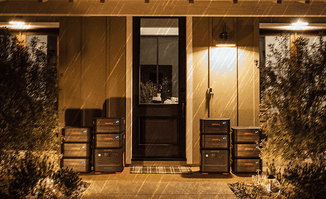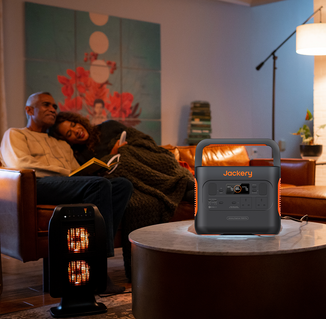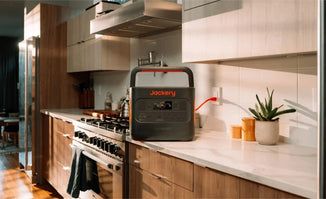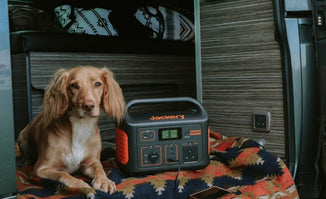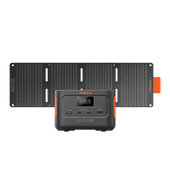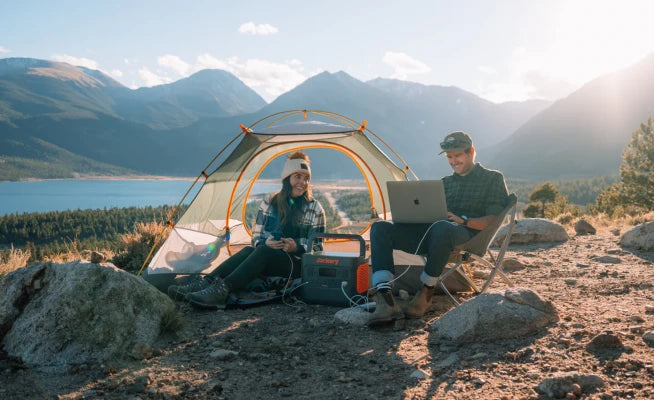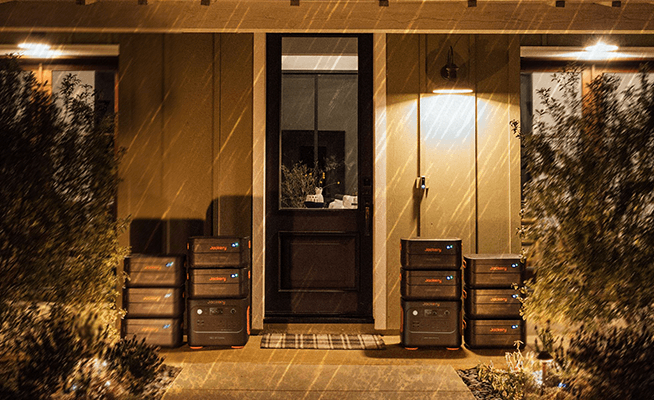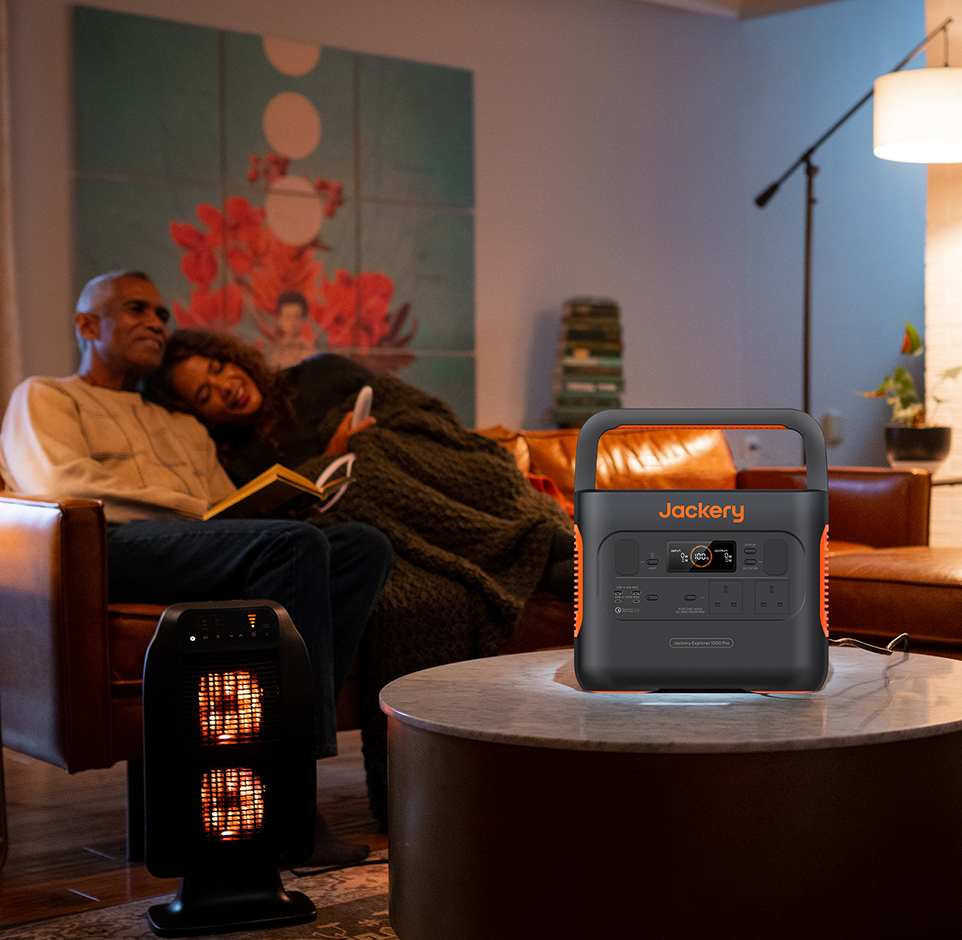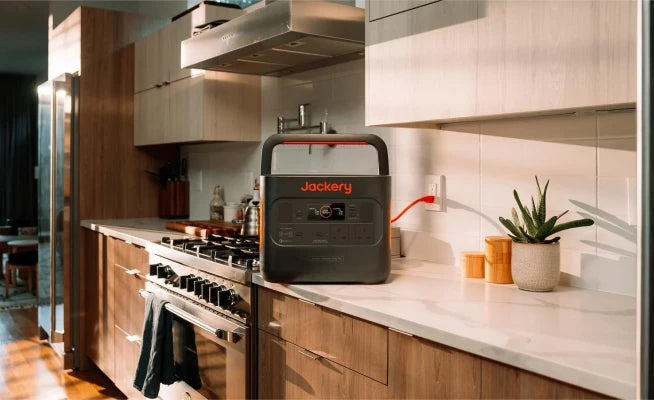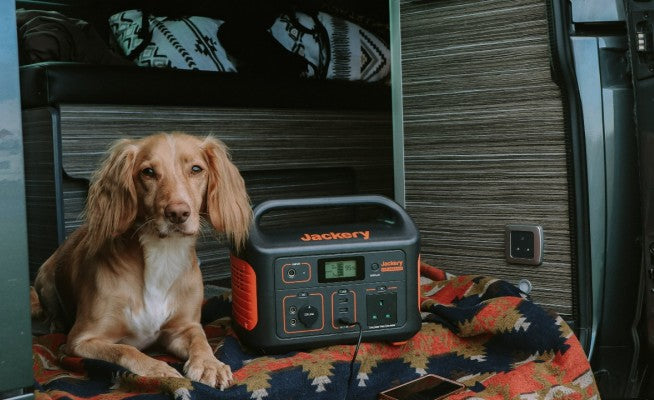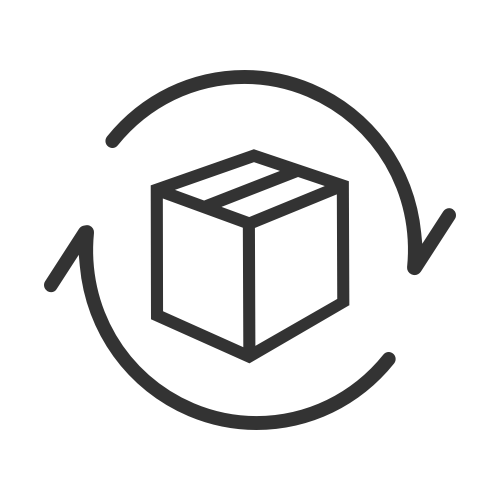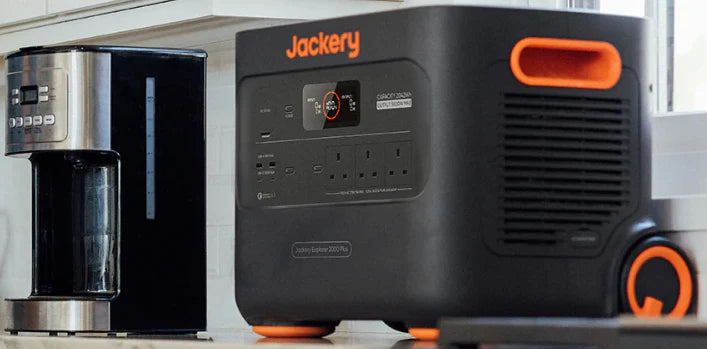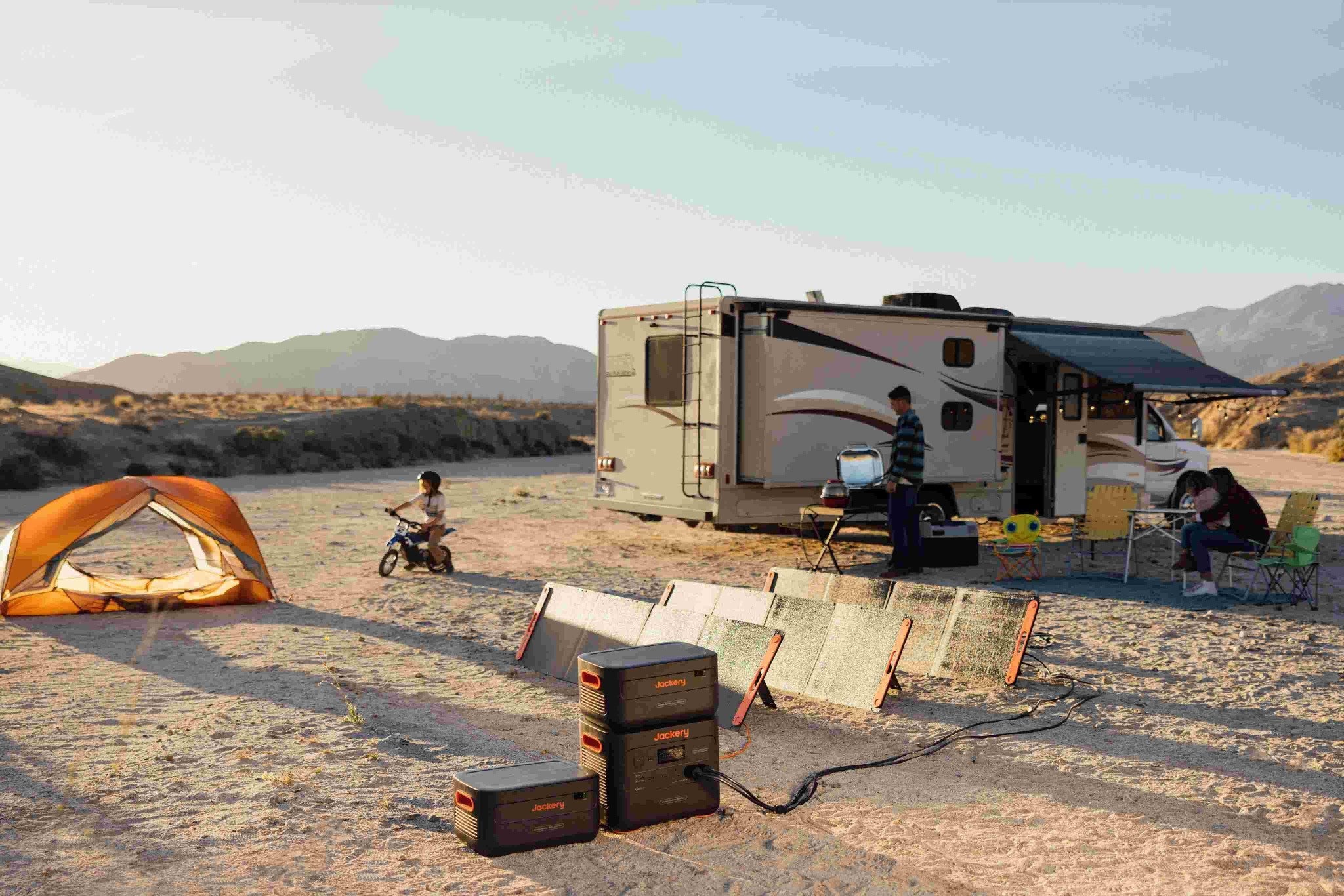A 3000W inverter converts power from solar panels, batteries, and other sources into usable AC electricity for homes and businesses. In solar energy systems, an inverter is a device that converts energy from solar panels from DC to AC so that linked appliances can function.
This article introduces the powerful 3000W inverter, a clever, effective solution for converting DC to AC power in homes, RVs, mobile offices, and backup power systems. The 3000W inverter has advanced features, intelligent load management, and many safety measures, making it excellent for renewable energy systems, emergency backup power, and ordinary off-grid life.
Besides, we recommend Jackery Portable Power Stations (including 3000W models), which utilise pure sine wave inverters to ensure stable and consistent power supplies.
|
Key Takeaways: |
|
- A 3000W inverter provides consistent, efficient AC power for off-grid or backup household appliances, tools, and electronics. - A 3000W inverter supports multiple voltage standards and is ideal for solar power systems, RVs, mobile workplaces, and emergency home backup. - A 3000W inverter generates clean, reliable electricity suitable for delicate electronics such as laptop computers, medical equipment, and entertainment systems. - A 3000W inverter is lightweight and small, making it easy to install in cabins, RVs, and other confined locations, even though it produces much electricity. - A 3000W inverter is a good investment for individuals who want steady electricity without the cost of larger systems. - We recommend Jackery Explorer 2000 v2 and 2000 Plus and 3000 v2, the 3000W portable power stations with pure sine wave inverters to provide stable power. |
3000W Inverter Overview
3000W inverters convert direct currents from solar panels or batteries into alternating currents, the type of electricity most appliances use. As a result, a 3000W inverter can assist in converting everyday electrical use to renewable energy sources. They significantly contribute to the appliances' improved performance. Both stand-alone systems and unconventional power systems require this feature.
How Does An Inverter Work?
Transformers are responsible for the operation of inverters, which can take DC electricity and turn it on and off. This causes a waveform of alternating current (AC) to be produced on the side of the transformer connected to the output. The output voltage is 230V because the ratio of the windings is such that it occurs. The switching was accomplished by the early inverters by the use of a mechanical vibrator; however, newer models make use of electronic components.
What Are The Benefits of a 3000W Inverter?
One of the most popular sizes for both off-grid and backup power configurations is a 3000W inverter since it offers a multitude of well-worth advantages considering:
Powers Multiple Devices Simultaneously: 3000 watts of continuous output can power many household appliances or tools. It works with fridges, TVs, laptops, lights, fans, coffee makers, and tiny microwaves, making it suitable for home, RV, and workplace use.
High Power Output: Many 3000W inverters have surge ratings of 5000W to 6000W, so they can manage the startup surge of equipment like refrigerators, power tools, and pumps that need greater power. Air conditioners and washing machines will run longer with it, which can feed appliances over 3000 watts.
Versatile Applications: Besides home networking and weather gadgets, these inverters power utility-based systems like medical devices, industrial appliances, entertainment equipment, electric grills, and portable fans. The 3000W inverter is suitable for off-grid solar systems, RVs, blackout backup power, mobile enterprises, rural lodges, and more. That power range is just right—not too big and pricey but powerful enough for most daily purposes.
Environment Friendly: This particular size inverter is particularly effective when used in conjunction with solar and battery systems that function at 12V, 24V, or 48V. It can turn pure solar energy into AC power that homes, vehicles, or businesses can utilise. Through the utilisation of solar-powered inverters, one can obtain energy that is both cost-effective and renewable.
Portable and Easy to Install: The majority of inverters with a power output of 3000W are small and relatively lightweight, which makes them simple to install in a solar shed, truck, or recreational vehicle. A great number of types come equipped with display screens or remote controls, making monitoring and control more user-friendly altogether.
What Can a 3000W Inverter Run in the UK?
What kinds of appliances can be powered by an inverter with a power output of 3000 watts? The following is a comprehensive list of the types of appliances that can be powered by an inverter with a power output of 3000 watts:

Household Appliances
Refrigerators
Microwaves
Coffee makers
Air conditioners (smaller units)
Toaster ovens
Fans
Televisions and home entertainment systems
Computers and laptops
Lighting fixtures
Keep in mind that many appliances, such as washing machines and refrigerators, need a surge power supply that can be two to three times their authorised watts when they first turn on. To avoid overloading, make sure the inverter's surge capability can manage these peaks.
Power Tools and Electronics
Drills
Circular saws
Welding Machine (smaller models)
Sanders
Grinders
Small portable air compressors
Air compressors (smaller models)
Smartphones and tablets
Laptops and chargers
Cameras and camcorders
Gaming consoles
Portable speakers
Battery chargers
In addition to having a larger power rating higher than a 2000W inverter, a 3000W inverter is also suited for powering many electronic devices simultaneously. Additionally, it can manage construction tools with large power requirements.
Recreational and Outdoor Equipment
Air conditioners
Induction cooktops
Portable refrigerators
LED bulbs
Electric grills
Portable stoves
Electric coolers
Portable heaters
Electric blankets
Water pumps
Regarding RV equipment, a 3000W inverter is a fantastic choice; nevertheless, it is important to remember that certain air conditioners demand a surge power greater than 3000W. Using a soft start kit to lessen the early power spike is something you should think about doing if your RV air conditioner has a high beginning load.
Medical Devices
The ability to rely on essential medical equipment, such as continuous positive airway pressure (CPAP) machines, oxygen concentrators, and infusion pumps, enables the provision of uninterrupted medical assistance.
What Are Some Uses Of a 3000W Inverter?
A solar energy system not connected to the grid must nearly always include an inverter with a power output of three thousand watts. In order to convert the direct current (DC) energy that is generated by your solar panels into alternating current (AC) energy, this inverter will take the DC energy a step further. Your equipment will require this alternating current (AC) power to function properly.

This is a list of some of the most common applications for a 3000W inverter:
Small Home Solar System: In a small home solar setup, a 3000W inverter is frequently the system's backbone, transforming the DC power stored in your battery bank into usable AC current for household appliances. It's powerful enough to power ordinary household items like lighting, a refrigerator, a television, a Wi-Fi network, a laptop, and a microwave.
A 3000W pure sine wave inverter is ideal for homeowners looking to lessen their reliance on the grid or attain energy independence. It provides the clean, consistent power required by modern gadgets while remaining efficient. It is usually combined with a 24V or 48V battery bank to boost performance and prevent energy loss.
Off-Grid RV: For those travelling in an off-grid RV, campervan, or motorhome, a 3000W inverter is a practical and dependable way to power life on the go. It may power a wide range of equipment, including coffee makers and induction cookers, entertainment systems, lighting, water pumps, and even air fryers or small air conditioners.
Backup Power for Small Businesses: Small business owners may also use it for power tools, point-of-sale systems, or communication equipment. Whether dealing with storm-related blackouts or unstable grid circumstances, this small inverter provides a reliable backup power supply without requiring a large generator.
Making Use of Camping Equipment Off-Grid: Camping does not have to imply leaving comfort behind. A 3000W inverter enables campers to utilise a wide range of electric devices off the grid, including portable cookers, coolers, lights, fans, and phone or camera chargers.
Whether staying at a basic campsite or deep in the wilderness, this level of inverter power allows you to cook hot meals, charge your electronics, and even run a small projector or music system. Combined with solar panels and a 12V or 24V battery arrangement, it creates a clean, quiet, and renewable energy source that improves the outside environment.
Small Solar System for Off-Grid Living: A 3000W inverter is a must-have for individuals living off the grid or in rural cabins who want to make the most of a small solar panel system. Even a small solar array may charge a battery bank and, with the help of an inverter, power necessary items such as lights, a refrigerator, or a washer.
Jackery Portable Power Stations with Pure Sine Wave Inverters
The primary benefit of a 3000W inverter is its ability to handle substantial power loads up to 3000 watts continuously, with often a higher surge capacity for starting appliances. This allows you to run multiple or larger appliances simultaneously.
A 3000W inverter is suitable for a wide range of applications, including off-grid living, home backup, RVs or campers, boats, DIY or small businesses. Here, we recommend the Jackery Portable Power Stations, with higher capacity and pure sine wave inverters, to support a consistent and stable power supply.
Here, we recommend Jackery Explorer 2000 v2, 2000 Plus and 3000 v2 portable power stations to power your appliances with higher capacities and portability. Besides, get ready to elevate your power game with our exclusive Early Bird Benefits! For a limited time, you can save up to £350 on your purchase and receive a free gift package valued at £327.99, which includes a car charging cable, an Extreme Guard Carrying Bag, and a trolley. Enjoy financial flexibility with a 3-month interest-free installment plan through PayPal, and rest easy knowing your investment is protected by a hassle-free 5-year warranty.
Jackery Explorer 2000 v2
The Jackery Explorer 2000 v2 Portable Power Station has an astounding 2042Wh capacity and 2200W output, enough to power most camping equipment, such as a camping heater. It also has two AC outlets, one USB-A 18W port, and two USB-C ports (100W + 30W), so you can charge several devices simultaneously indoors and outdoors.

The world's first 2kWh LiFePO4 power station, which features advanced EV-grade CTB (Cell to Body) Structure technology⁵, is engineered to be more compact and lightweight. It weighs a mere 38.6 lbs—approximately the same as a suitcase. It is the ideal power solution for off-grid living, camping, and road trips and features a foldable handle for effortless transport.
There are many ways to recharge it, including 2*SolarSaga 200W (5.5 hours), regular wall charging (1.7 hours), and car charging (24 hours). With Emergency Super Charge Mode, which can be activated through the Smart App, the power station can be charged from 0% to 80% in just 52 minutes with Emergency Super Charge Mode, which can be activated through the Smart App. This feature is ideal for situations where power is required urgently. A complete charge requires only 103 minutes in regular AC charging mode.
|
Appliances |
Running Time |
|
Coffee Maker (1120W) |
1.8H |
|
Portable Refrigerator (90W) |
15H |
|
Electric Oven (1600W) |
1.1H |
|
Light (5W) |
155H |
|
Laptop (80W) |
19 Times |
|
Projector (100W) |
15H |
(*The working hours are only for reference; the actual working hours depend on your usage.)
Jackery Explorer 2000 Plus
Jackery Explorer 2000 Plus is more powerful and versatile than 2000 v2. It is a solid portable power solution that delivers outstanding outdoor activities and home backup performance. With its impressive capacity and powerful output, this device can support the operation of many appliances.

The Jackery Explorer 2000 Plus enables the addition of extra battery packs, increasing the capacity from 2 kWh to an impressive 12 kWh, thereby significantly satisfying your power needs. This solar product has a remarkable output of 3000W, which can charge almost all essential appliances indoors or outdoors. If you only use one Explorer 2000 Plus battery pack, it can charge a 750W kettle for 2.2 hours.
The Explorer 2000 Plus stands out as a groundbreaking add-on battery pack that offers the convenience of recharging through solar panels, wall outlets or carports. This feature increases versatility, boosts charging efficiency, and shortens charging time.
ChargeShield is Jackery's advanced fast charge technology, featuring 62 protective mechanisms, 12 protective algorithms, and four types of physical safety protection. This technology uses a unique stepped variable-speed charging algorithm to enhance safety and extend battery pack lifespan by 50%.
|
Appliances |
Running Time |
|
Coffee Maker (1120W) |
1.8-8.6H |
|
Portable Refrigerator (90W) |
15-106.7H |
|
Electric Oven (1600W) |
1.1-6H |
|
Light (5W) |
155-1920H |
|
Laptop (80W) |
19-120 Times |
|
Projector (100W) |
15-96H |
(*The working hours are only for reference; the actual working hours depend on your usage.)
Jackery Explorer 3000 v2
At the heart of this system lies the Explorer 3000 v2, boasting a massive 3072Wh capacity and a formidable 3600W continuous output (with a 7200W surge capability), making it capable of running nearly 99% of your essential household appliances and high-demand outdoor equipment. Designed for ultimate reliability and longevity, the Explorer 3000 v2 integrates an advanced LiFePO4 (Lithium Iron Phosphate) battery, promising over 4000 charge cycles for a decade of dependable daily use.

Beyond its impressive power specifications, the Jackery Explorer 3000 v2 stands out with its rapid recharging capabilities, an ultra-fast 20ms UPS function for seamless power transitions, and innovative ZeroDrain technology, ensuring it retains up to 95% of its charge for a whole year in storage.
Its robust yet portable design, complete with integrated wheels and a handle, ensures you have access to substantial, clean energy wherever you need it most—from powering your RV adventures and extensive camping trips to providing peace of mind during unexpected power outages at home.
It utilises microamp-level self-consumption power management (ZeroDrain Tech). This innovative feature allows the 3000 v2 to retain up to 95% of its charge after 365 days of storage. This is crucial for emergency backup, ensuring your power station is ready when you need it without constant recharging.
Besides, the 3000 v2 uses the ChargeShield 2.0 technology. This advanced battery management system (BMS) optimises charging and discharging, prolonging battery life and ensuring overall safety through features like overvoltage, over-temperature, and short-circuit protection.
|
Appliances |
Running Time |
|
Coffee Maker (1120W) |
2.3H |
|
Portable Refrigerator (90W) |
23.3H |
|
Electric Oven (1600W) |
1.6H |
|
Light (5W) |
96.7H |
|
Laptop (80W) |
36 Times |
|
Projector (100W) |
21.4H |
(*The working hours are only for reference; the actual working hours depend on your usage.)
How to Choose the Best 3000W Inverter in the UK?
The following are some factors to consider when choosing a 3000W inverter in the UK:

Factor 1: Types of Inverters
Modified Sine Wave Inverters: Modified sine wave inverters power many devices. Power drills, blenders, hairdryers, curling tongs, basic battery chargers, and others will quickly drain a 12V recreational battery when camping.
Many computers can handle a modified sine wave, but verify with the manufacturer first. If you use a laptop charger with its own power adaptor, the worst that can happen is damage. The laptop should be OK. Be careful with delicate electronic loads. These require a pure sine wave inverter.
Pure Sine Wave Inverters: Since pure sine wave inverters accurately replicate the waveform produced by utility companies, they can be utilised with any kind of load without risk.
Switch mode chargers, which can be used with cordless power tools, electric toothbrushes, and Continuous Positive Airway Pressure (CPAP) machines—a positive airway pressure ventilator used to treat sleep apnea, for example—are essential components of sensitive kits.
However, it's advised that you don't rely just on an inverter if a piece of medical equipment—like a CPAP machine—is essential. A generator or other steady source of electricity, like an electric hook-up at the campsite, is better.
|
|
Pros |
Cons |
|
Modified Sine Wave Inverter |
Reasonably priced. Suitable for a comparatively broad variety of equipment. |
Could result in interference. Could damage sensitive equipment. Could cause overheating. |
|
Pure Sine Wave Inverter |
All equipment is compatible (subject to load limitations). |
Pricey (but becoming less expensive). |
Factor 2: Your Power Needs
You should check that 3000W is sufficient for your overall load (add up the wattage of everything you will be running simultaneously). Certain appliances, such as refrigerators, pumps, and power tools, require a higher startup surge. Ensure the inverter you select has a large surge capacity (about 6000W for 3000W inverters).
Rated Power Capacity: Continuous or inverter-rated power is the highest amount of electrical power an inverter can produce without overheating or overloading. Watts (W) or kilowatts (kW) rate inverter power. Durationally exceeding the inverter's rated power capacity might cause overheating, shutdown, or damage. Therefore, choosing an inverter with the right power capacity is crucial for reliable and safe electrical equipment operation.
Factor 3: Input Voltage
Solar panels, batteries, or a vehicle's electrical system supply DC electricity. DC voltage powers the inverter and generates AC power. Inverters require precise input voltages. Campervan inverters typically feature 12, 24, and 48 DC input voltages. A 12V inverter requires 12V DC input, while a 24V one requires 24V. To avoid damage, the input voltage must match the inverter's. Good input voltage is usually within a range.
Choose the inverter based on your needs:
12V: Used frequently in trailers, boats, and smaller solar installations.
24V or 48V: More effective for larger off-grid installations than smaller ones.
Factor 4: Key Features
Built-in Safety Features: Overload, overheat, low-voltage shutdown
Remote Control: Handy for installations that are difficult to access.
Display Features: Voltage, power usage, and battery level indicators.
Build Quality: Look for UKCA or CE certification, good cooling fans, and sturdy casing.
How Many Batteries Do I Need to Run a 3000W Inverter?
When calculating the number of batteries required for a 3000W inverter, your energy usage, the efficiency of the inverter, the voltage of the battery, and its capacity are all factors that should be considered. The overall load power and the length of time that the inverter is being used are two essential criteria. Accurate calculations guarantee a steady power supply and a longer lifespan for the battery.
The following formula can calculate how many batteries you need to run a 3000W inverter:
Number of Batteries = Total Power of the Loads (W) / (Battery Voltage (V) × Battery Capacity (Ah) × Depth of Discharge (DoD) × Inverter Efficiency)
Let's assume:
Load Power = 3000W
Battery Voltage = 12V
Battery Capacity = 100Ah
Depth of Discharge (DoD) = 0.5 (50% for lead-acid; 0.8 for LiFePO4)
Inverter Efficiency = 90%
Number of Batteries = 3000 / (12 × 100 × 0.5 × 0.9) = 3000 / (540) ≈ 5.56
Therefore, a 3000W inverter requires at least 6 × 12V 100Ah batteries to achieve 50% DoD and 90% efficiency.
If you use LiFePO4 batteries with 80% DoD, the result would be:
Number of Batteries = 3000 / (12 × 100 × 0.8 × 0.9) = 3000 / 864 ≈ 3.47
As a result, you will need at least 4 × 12V 100Ah batteries to achieve 80% DoD and 90% efficiency.
How Many Solar Panels Do I Need for a 3000W Inverter?
To determine the number of solar panels that are necessary for a 3,000W inverter, you can use this straightforward calculation:
To begin, use the following formula to calculate the entire amount of power that you require:
Inverter Size / Efficiency = Total Power Required
Using this information, you can determine the number of panels that are required to accomplish this goal:
Total Power Required / Power Output of 1 Solar Panel = Total Panels Needed
Let's assume:
Inverter size = 3000W
Inverter efficiency = 90%
Power output of one solar panel = 300W (typical for standard panels)
Total Power Required = 3000W / 0.9 = 3333.33W
Number of Panels = 3333.33W / 300W per panel ≈ 11.11
Therefore, in order to maintain maximum capacity and account for inverter losses, a 3000W inverter requires a minimum of 12 × 300W solar panels. This figure may vary depending on solar hours, location, and panel efficiency.
3000W Inverters FAQs
The following are the frequently asked questions about the 3000W inverters in the UK.
1. How many batteries do I need to run a 3000W inverter?
The number of batteries you need to run a 3000W inverter depends on how long you want to run it and the voltage of your system (12V, 24V, or 48V). When running at full capacity, a 3000W inverter pulls 250 amps at 12V, 125 amps at 24V, or 62.5 amps at 48V.
For example, if you're using a 12V system and want to run the inverter at full load for 1 hour, you'd need at least 250 amp-hours (Ah) of battery capacity—ideally more to prevent deep discharging. That could mean two 12V 200Ah lithium batteries or four 12V 100Ah deep-cycle AGM batteries wired in parallel.
However, using a 24V or 48V system is more efficient, requiring fewer amps and smaller cables. For longer run times or to avoid fully draining your batteries, you'll need more capacity—so sizing your battery bank also depends on your energy usage and how often you recharge (solar, mains, generator, etc.).
2. What can I run off a 3000W inverter?
A 3000W inverter can power a variety of household appliances, tools, and gadgets, making it ideal for off-grid systems, RVs, and backup power configurations. Depending on their combined wattage, you can power a refrigerator, microwave, TV, computers, lights, fans, and a coffee machine all at once.
It can also power larger equipment such as a washing machine, vacuum cleaner, or even tiny air conditioners and power tools, as long as they don't exceed the inverter's continuous or surge rating. A pure sine wave 3000W inverter is suitable for delicate electronics since it provides clean, reliable power while avoiding device damage. Just ensure that the overall wattage of all objects functioning simultaneously does not exceed the inverter's capacity.
3. How long will a 12v battery last with a 3000W inverter?
A 12V battery that powers a 3000W inverter will not last long, especially if you consistently use the full 3000 watts. For example, assuming 90% inverter efficiency, a standard 12V 200Ah battery would only last about 43 minutes at full load. This is because drawing 3000W from a 12V system needs approximately 250 amps, quickly draining even huge batteries.
In actuality, you'd get even less usable time if you factor in voltage drop, inverter efficiency losses, and the fact that most lead-acid batteries should never be depleted below 50%. To run a 3000W inverter efficiently for extended periods of time, utilise a higher voltage system (such as 24V or 48V) with a larger battery bank to reduce current draw and lengthen battery life.
4. What can a 3000W inverter carry?
A 3000W inverter can power most household appliances and tools, such as a refrigerator, microwave, coffee maker, TV, laptop, lights, and even a washing machine or small air conditioner—either alone or in combination, as long as the overall wattage does not exceed 3000 watts. It can also handle power tools such as drills and saws, making it ideal for home, RV, or mobile work. A pure sine wave inverter provides safe and reliable power to sensitive equipment.
Final Thoughts
The 3000W inverter serves as a strong and dependable energy source for any individual, fulfilling their various energy needs, including powering household appliances and enabling off-grid living. It serves as a mechanism for transforming energy into something logically useable, making it a crucial component of the contemporary renewable energy landscape. Suppose you're searching for dependable and efficient solutions that let you move around. In that case, choose from the Jackery Portable Power Stations range to get the best power source.

